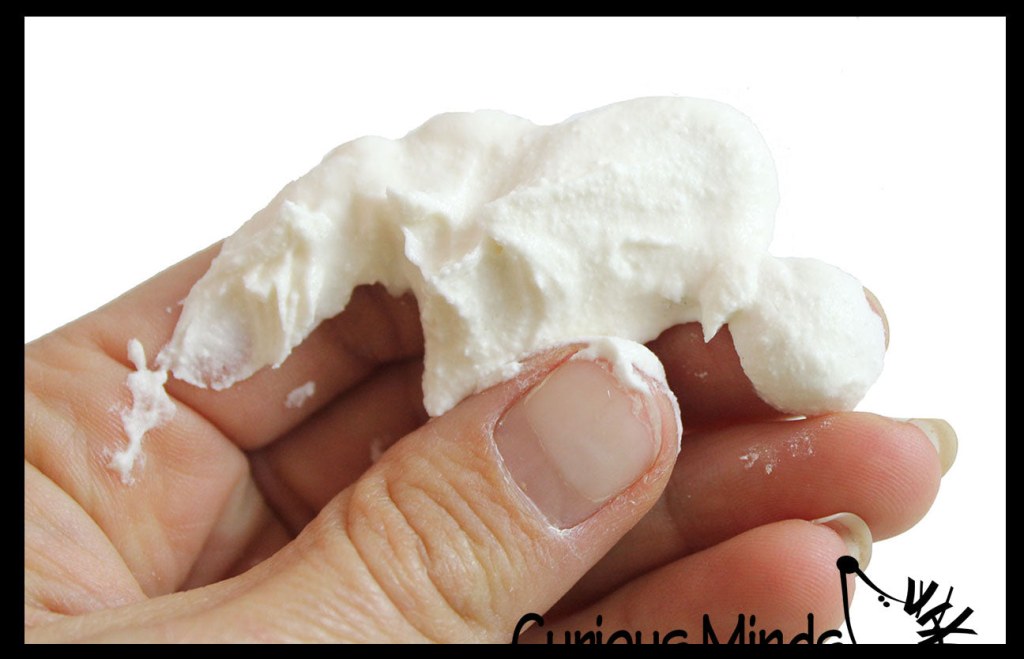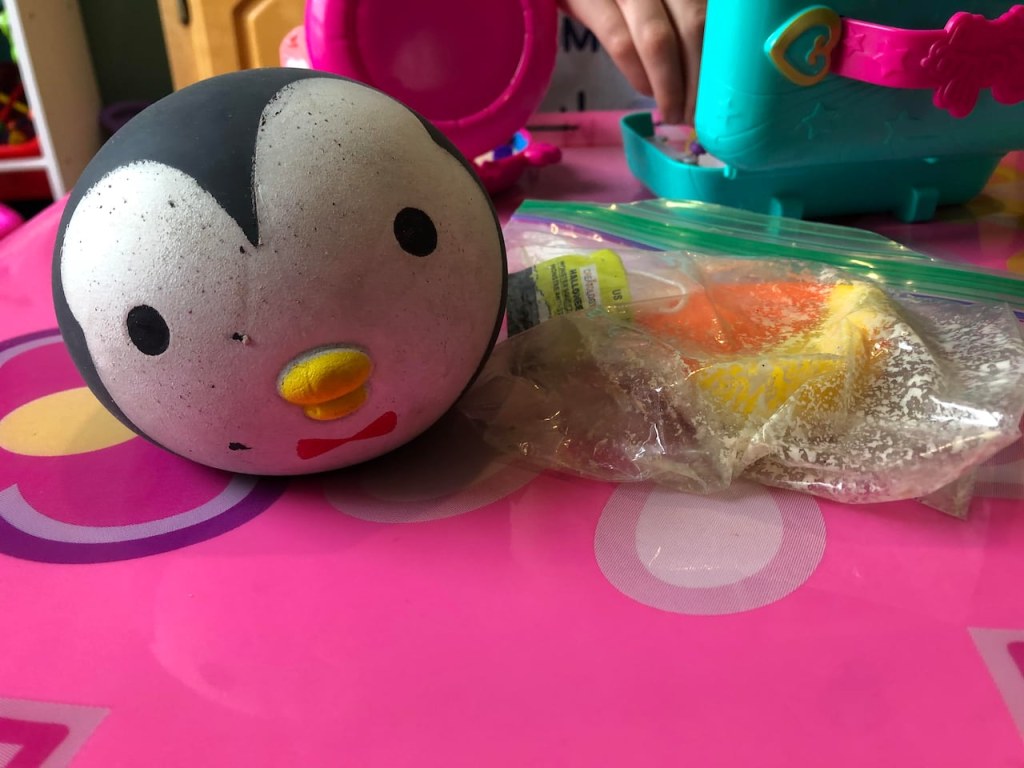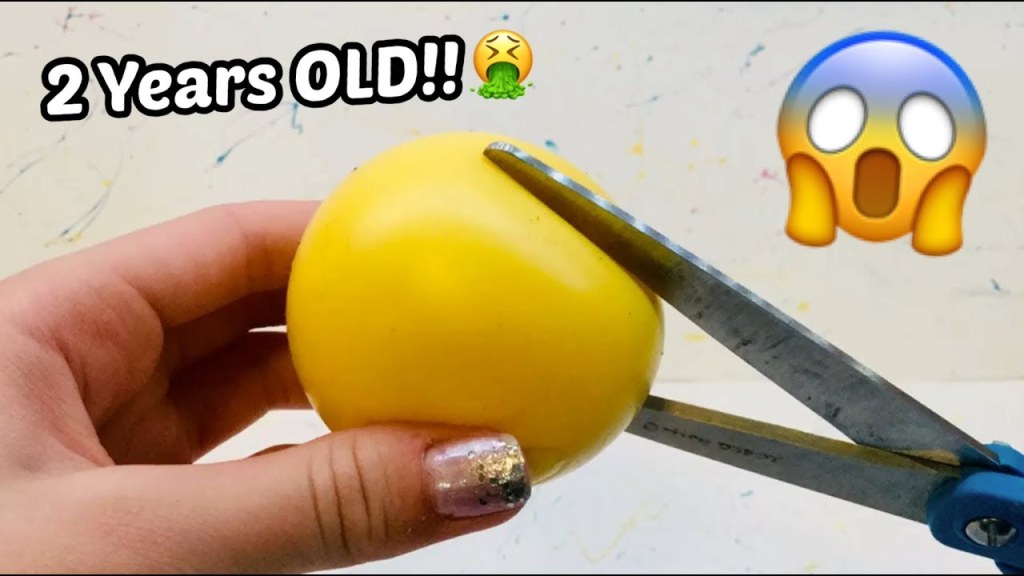Unveiling The Truth: Is The Stuff In Squishy Balls Toxic? Discover Now And Take Action!
Is the Stuff in Squishy Balls Toxic?
Introduction
Hello, Collector! Welcome to our informative article about the potential toxicity of the stuff in squishy balls. As a stuff enthusiast, it’s essential to understand the safety of the materials we interact with. In this article, we will explore whether the stuff in squishy balls is toxic and provide you with all the necessary information to make an informed decision. So, let’s dive in!
3 Picture Gallery: Unveiling The Truth: Is The Stuff In Squishy Balls Toxic? Discover Now And Take Action!
What is the Stuff in Squishy Balls?
🧸 Squishy balls are a popular stress-relief toy that provides sensory stimulation and relaxation. They are filled with a soft, squishy substance that gives them their unique texture and feel. However, have you ever wondered what exactly that stuff is made of? Let’s find out!
Composition of Squishy Balls

Image Source: curiousmindsbusybags.com
The stuff inside squishy balls is typically a blend of materials, including polyurethane foam, silicone oil, and water. These substances come together to create the stretchy and moldable texture that makes squishy balls so satisfying to squeeze and play with.
Are the Materials Toxic?
You might be concerned about the safety of these materials, especially if you or your children frequently use squishy balls. Thankfully, the stuff inside squishy balls is generally non-toxic and safe for regular use. Let’s explore the reasons why.
Non-Toxic Polyurethane Foam

Image Source: cbc.ca
The polyurethane foam used in squishy balls is typically non-toxic. It is a common material found in various household products, such as mattresses and furniture cushions. The foam used in squishy balls undergoes rigorous testing to ensure it meets safety standards and regulations.
Silicone Oil Safety
Silicone oil, another component of squishy balls, is also considered safe. It is commonly used in medical and cosmetic products and has low toxicity levels. However, it’s important to note that some individuals may have allergies or sensitivities to silicone. If you or your child experiences any adverse reactions, discontinue use and consult a healthcare professional.
Water Content

Image Source: ytimg.com
The water content in squishy balls adds moisture and helps create the softness of the toy. Water, of course, is non-toxic and poses no harm when enclosed within the squishy ball. However, it’s essential to ensure the squishy ball remains intact and doesn’t leak, as this could introduce potential hazards.
Age Recommendations and Supervision
While the materials in squishy balls are generally safe, it’s crucial to consider age recommendations and supervise children during play. Young children may be more likely to put toys in their mouths, and accidental ingestion of any foreign material can be harmful. Always follow the manufacturer’s age guidelines and use your judgment to ensure safe play.
Conclusion
In conclusion, the stuff inside squishy balls is typically non-toxic and safe for use. The materials, such as polyurethane foam, silicone oil, and water, undergo safety testing to meet regulations. However, individual sensitivities or allergies may occur, so it’s vital to monitor for any adverse reactions. Remember to follow age recommendations and supervise young children during play. Enjoy the stress-relieving benefits of squishy balls with peace of mind!
Frequently Asked Questions
1. Are squishy balls suitable for all ages?
Yes, squishy balls are generally suitable for all ages, but it’s essential to follow the manufacturer’s age recommendations and supervise young children during play.
2. Can the stuff inside squishy balls leak?
While rare, it is possible for squishy balls to develop small holes or tears, leading to leakage of the contents. Inspect your squishy balls regularly and discard any damaged ones to prevent potential hazards.
3. Can squishy balls cause allergies?
While the materials in squishy balls are considered safe for most individuals, some people may have allergies or sensitivities to silicone. If you experience any adverse reactions, discontinue use and consult a healthcare professional.
4. How can I clean squishy balls?
Most squishy balls can be cleaned by gently wiping them with a damp cloth. Avoid submerging them in water or using harsh cleaning agents, as this may damage the toy.
5. Can the stuff inside squishy balls be swallowed?
The materials inside squishy balls are generally non-toxic, but swallowing them is not recommended. Ensure the squishy balls remain intact and avoid letting young children put them in their mouths.
Advantages and Disadvantages of Squishy Balls
Advantages
1. Stress Relief: Squishy balls provide a tactile and soothing experience, helping to reduce stress and anxiety.
2. Improved Focus: Squeezing and manipulating squishy balls can help improve concentration and focus, making them beneficial for individuals with ADHD or sensory processing difficulties.
3. Portable Relaxation: Squishy balls are small and portable, making them convenient for use on the go or during stressful situations.
Disadvantages
1. Potential Choking Hazard: Small squishy balls or pieces that may detach can pose a choking hazard, especially for young children or pets.
2. Limited Durability: Squishy balls may tear or break with frequent use, requiring replacement.
3. Sensory Preferences: While many people find squishy balls enjoyable, individual sensory preferences may vary, and some individuals may not find them appealing or relaxing.
Conclusion
Collector, now that you know the safety aspects and advantages of squishy balls, you can make an informed decision about using them. Remember to follow age guidelines, supervise young children, and inspect the squishy balls regularly for any signs of damage. Enjoy the tactile experience and stress relief benefits that squishy balls offer!
Final Remarks
While we have provided comprehensive information about the potential toxicity of the stuff in squishy balls, it’s important to note that individual sensitivities and reactions may vary. If you have any concerns or experience unusual symptoms, consult a healthcare professional. Always prioritize safety and choose toys and materials that align with your personal preferences and needs. Happy squishing, Collector!
This post topic: Stuff

